-
Titolo
-
Lighthouses, buoys, and other navigational aids guide ships and maintain them away from dangerous spots during wartime
-
Article Title and/or Image Caption
-
Title: War leaves its mark on the signposts of the sea
-
Subititle: The Coast Guard has a big job in maintaining our lighthouses, buoys, and other navigational aids under wartime pressure
-
extracted text
-
IN TIME of peace, the U.S,
Coast Guard maintains
thousands of aids to navi-
gation — lighthouses, light-
ships, radio beacons, buoys,
and channel markers—up |
and down our coasts and in
Alaska and our other pos-
sessions. With the war, this |
division of Coast Guard |
work has doubled and re-
doubled, taking on new im-
portance and new dangers.
In distant harbors all over |
the world, the Coast Guard
has had to survey and mark |
channels, harbors, and mine
flelds, its men working in
frequent danger of sub-
marine or air attack from
the enemy. In our own
waters, also, its job has
doubled as shipping has in- |
creased by leaps and bounds
and as harbor-defense works
have introduced new haz-
ards to navigation. |
Basically, the job of all |
navigation aids is to guide
ships along the coast and
into our harbors by warn-
ing them away from dan. |
gerous spots. In peacetime, |
such dangers are presented
by rocks, shoals, wrecks,
and similar obstructions. In
wartime, there are the added
complications of mine fields,
antisubmarine nets, and
new anchorages required by
convoys at their points of rendezvous.
Many of the devices used by the Coast
Guard are swathed in secrecy. Should their
details fall into the hands of the enemy,
they might aid submarines to destroy
whole convoys of our ships. But the Coast
Guard, and all navigators, still place their
greatest reliance upon such devices as light
houses and buoys, whose basic principles
were developed long before the war, but
whose operation has been modified to meet
wartime conditions.
At the outbreak of the war, there were
more than 17,000 buoys in use along our
coast; today, this number has been sub-
stantially increased. Buoys differ widely
in size, shape, and type, and each has its
special significance and meaning to the
‘mariner.
As a ship comes toward a harbor, the
navigator steers a course between two
buoys which mark the entrance to the
channel, a conical red “nun” buoy marking
the right-hand margin, a cylindrical black
“can” buoy marking the left. These may
be located far out to sea, but once the
‘mariner has found these buoys his course is
clear, for always within sight or sound
will be the next pair of channel markers,
until he has found his way to a dock or safe
anchorage. Buoys with red and black
horizontal bands indicate obstructions or
channel junctions.
Other colors are used for special purposes.
White buoys mark anchorages; yellow ones,
quarantine anchorages. A white buoy with a
green top signifies an area in which dredging
is being carried on. A black and white, hori-
zontally banded buoy marks the limits of areas
in which fish nets or traps are permitted.
A large proportion of all buoys carry lights
50 that they can be seen by mariners at night.
Here again color is important, green lights
marking the left sides of channels as you go
in, and red lights the right sides. To further
facilitate identification, flashing lights are
often used so that the navigator, in the dark
of night, may distinguish one buoy from an-
other, or slowly flashing lights indicate the
regular channel markers,
Quick-flashing lights—60 or more flashes
per minute—are placed at sharp turns or sudden
constrictions of the channel and call for special
caution. If the light consists of quick flashes
interrupted by dark intervals of about four
seconds between flash groups, the navigator
knows that he is heading toward some obstruc-
tion or a junction of channels. Short and long
flashes alternating mark the center of a wide
channel, and tell the navigator that he should
pass close to the buoy for greater safety.
‘While lights on buoys facilitate nighttime navi-
gation in good weather, sound is utilized to
achieve a similar end in fog or storm. Thus,
lighted and unlighted buoys at important points
are equipped with whistles, bells, or gongs oper-
ated by the motion of the buoy in the water.
More than 107 types of buoys have been de-
veloped to cope with differing conditions met at
various buoy locations. Very large buoys must
be used in deep water to support the long chain
which connects the buoy to its anchor on the
bed of the sea. Smaller, extremely rugged units
are moored in rough, shallow waters, and are
designed with low centers of gravity to remain
nearly upright despite the heavy pitching of the
waves. Broad, round-bottomed buoys are used
in shallow waters.
Both electricity and acetylene gas are
utilized to operate buoy lights. When acety-
lene is used, large tanks of gas under pres-
sures as high as 14 atmospheres are placed
in special receptacles in the body of the
buoy. A tiny light burns constantly, al-
though this is invisible to the navigator. A
clockwork mechanism causes gas to be fed
into the burning chamber in short puffs.
Here it is set off by the pilot light, the
mechanism being so adjusted as to provide
the predetermined quick or slow or inter-
rupted flashes. The flame itself is small—
less than an inch in length, but it is magni-
fied and concentrated by the lenses Which
surround it so that it shines with great
brilliance over a considerable area of sea.
When electricity is used, a special mecha-
nism in the buoy automatically replaces
burnt-out bulbs. Whenever the circuit can-
mot be completed because of bulb failure,
the device instantly makes a partial revolu-
tion, bringing a new bulb into contact.
With such devices, it is possible for buoys
to remain unattended for many months—
sometimes for as long as a year. In war-
time, however, buoys are exposed to hazards
from drifting mines, debris, and derelicts,
and from the impact of ships guided by
navigators in unfamiliar harbors. To meet
these added hazards, the Coast Guard has
had to multiply its buoy inspection and
servicing trips.
It has also developed many special buoys.
One of these is a can or nun buoy topped
with a specially designed prismatic reflect-
ing paper. At night this buoy cannot be
seen, since it casts no light of its own.
An enemy ship or submarine trying to make
its way into a harbor would have to dis-
close its own position before it could find
such a buoy. However, a ship on a legiti-
mate mission can quickly locate these de-
vices by sweeping the sea with even a small
flashlight, for the reflecting paper picks up
any light that strikes its surface.
Frequently, war conditions have required
the redesigning of standard types of buoys.
For instance, buoys used to support sub-
marine nets are sometimes drawn far out of
plumb by the tug of the net itself. If
equipped with standard light mechanisms,
such buoys would cast their light at an
angle invisible from the channel. To over-
come this difficulty, special tripods have
been developed which hold the lights in a
suitable horizontal position despite the dis-
torted tilt of the base buoy.
Lightships and lighthouses are designed
to support a light at great height above
the sea. They usually are placed at en-
trances to harbors, or at isolated danger
pointa from which it is necessary to warn
mariners away.
Today, most lighthouses also house fog
signals bells, whistles, or horns—and radio-
beacon equipment. War has brought an end
to the traditional loneliness of the light-
house keeper, for now most lighthouses have
‘augmented staffs operating the special equip-
‘ment essential fn wartime for detection and
recognition of incoming vessels.
Lighthouse signals have their own char-
acteristics, just as do those of buoys. Some
show a continuous, steady light. Others flash
at regular intervals. SUIl others fre up
at intervals with flashes of greater brilliance
than thelr continuous light. Sometimes an
alternation of colors Is used.
All these differences aid the mariner in
recognizing the light which marks his land-
fall.” Once he has identified the light, n
reforence to his charts will give him his
position within a few yards.
The flashing lights of lighthouses are
produced In several ways. In some cases
the flashes result from the rotation of lenses
in which various flash panels are incorpo-
rated. Tn large lighthouses, where electricity
is the illuminant, timing devices interrupt
the flow of current or conceal the light
source at definite intervals.
In minor lights, where acetylene gas is
used, the flashes are produced by interrupt-
ing the flow of gas With a bellows-like de-
vice, each small charge of gus being ignited
by & constantly burning, nonluminous pilot
flame.
To service lighthouses, lightships, and
buoys, the Coast Guard operates large fleets
of tenders and cutters—sturdy little ships
capable of carrying heavy buoys on their
decks and equipped with derricks which
can lift the full weight of a buoy, its long
anchor chain, and its anchor. These vessels
are specially designed to navigate in shallow
waters and close to dangerous underwater
obstructions. Their sturdy hulls can with-
stand battering contact with the stone or
steel walls of lighthouse structures, under
the roughest conditions of sea. Frequently,
they must go far out to rescue buoys which
have been cast free from their anchors by
collision or storm. For such buoys—their
lights still flashing—might serve as false
beacons when once they leave their moor-
ings and cause the wreck of the very ships
they were designed to save.
-
Autore secondario
-
Albert Q. Maisel (article writer)
-
Robert F. Smith (photographer)
-
Lingua
-
eng
-
Data di rilascio
-
1944-03
-
pagine
-
104-108, 191
-
Diritti
-
Public Domain (Google digitized)
-
Archived by
-
Lorenzo Chinellato
-
Marco Bortolami (editor)
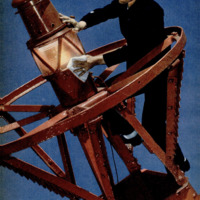 Immagine 2022-04-25 143720.png
Immagine 2022-04-25 143720.png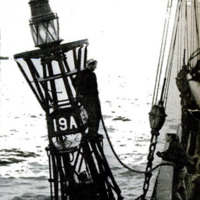 Immagine 2022-04-25 143947.png
Immagine 2022-04-25 143947.png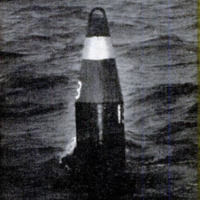 Immagine 2022-04-25 143738.png
Immagine 2022-04-25 143738.png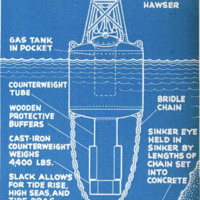 Immagine 2022-04-25 143919.png
Immagine 2022-04-25 143919.png Immagine 2022-04-25 143750.png
Immagine 2022-04-25 143750.png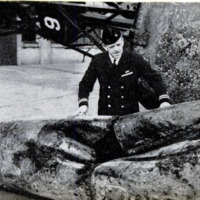 Immagine 2022-04-25 143804.png
Immagine 2022-04-25 143804.png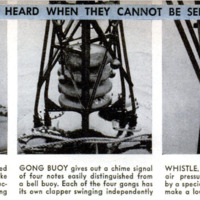 Immagine 2022-04-25 143829.png
Immagine 2022-04-25 143829.png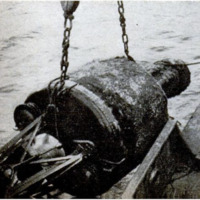 Immagine 2022-04-25 143844.png
Immagine 2022-04-25 143844.png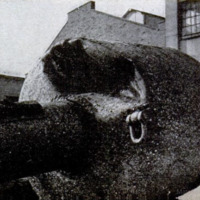 Immagine 2022-04-25 143855.png
Immagine 2022-04-25 143855.png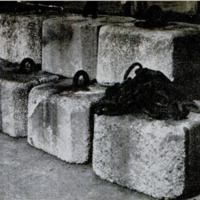 Immagine 2022-04-25 143908.png
Immagine 2022-04-25 143908.png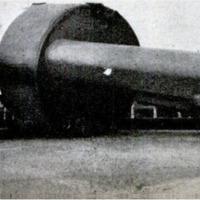 Immagine 2022-04-25 143934.png
Immagine 2022-04-25 143934.png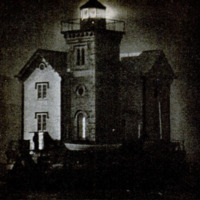 Immagine 2022-04-25 144004.png
Immagine 2022-04-25 144004.png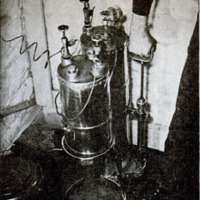 Immagine 2022-04-25 144017.png
Immagine 2022-04-25 144017.png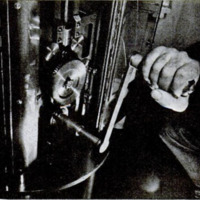 Immagine 2022-04-25 144029.png
Immagine 2022-04-25 144029.png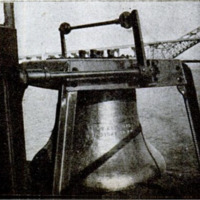 Immagine 2022-04-25 144045.png
Immagine 2022-04-25 144045.png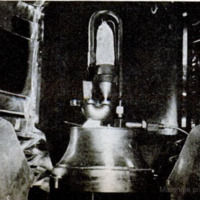 Immagine 2022-04-25 144056.png
Immagine 2022-04-25 144056.png














